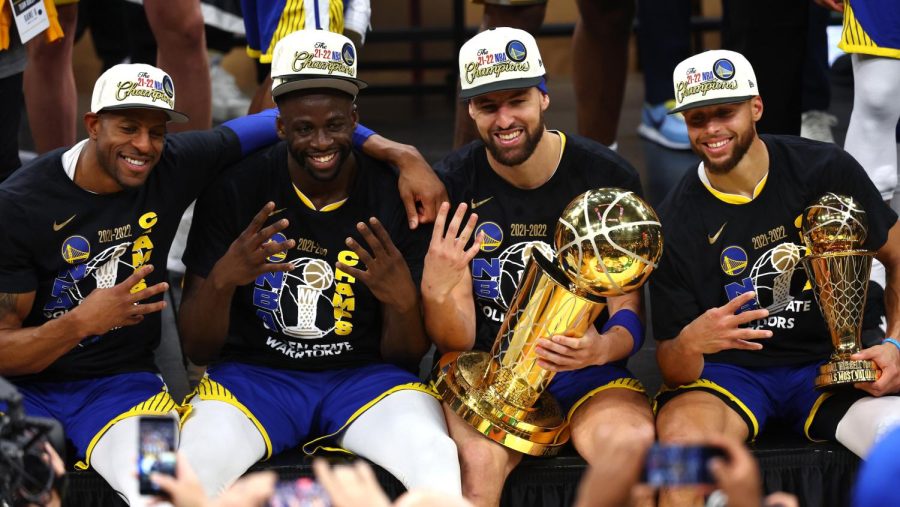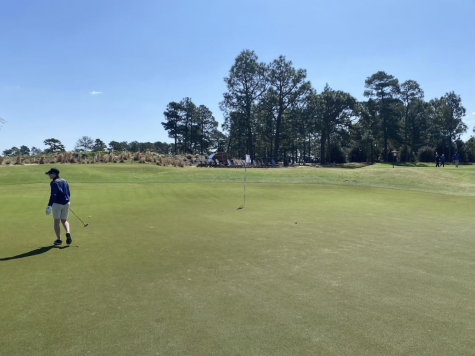2022 NBA Season Preview
October 20, 2022
The last time we saw real NBA action, the Golden State Warriors were hoisting the Larry O’Brien trophy for the fourth time in eight years. However, after a crazy off-season that featured trades, signings and holdouts, there is no guarantee they follow suit. In this article, let’s take a look at five teams that got better and could ultimately challenge the defending champion Warriors this upcoming season.
The first team that improved this offseason was the Minnesota Timberwolves. Despite already having a solid young core of D’Angelo Russell, Karl-Anthony Towns and Anthony Edwards, Minnesota went out and made a splash by trading for Jazz center Rudy Gobert. However, it wasn’t cheap as they had to give up four first round picks, a pick swap and five players. But Rudy Gobert is not your average NBA player. In nine seasons with the Jazz, Gobert racked up three All Star Appearances, six NBA First-Team All Defense Recognitions and three Defensive Player of the Year Awards, all while helping the Jazz reach the playoffs in six straight seasons.
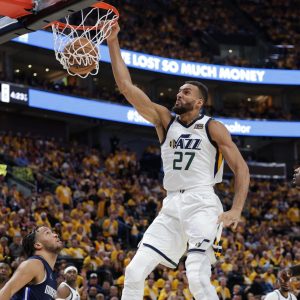
However, this trade does come with a couple of questions, the first of these being Gobert’s role on the court. The presumptive frontcourt of Gobert and Towns sounds great, but both of these players have played the center position for their entire careers. Now, one of them will have to switch to the power forward position while the other remains at the five. Karl-Anthony Towns makes the most sense at the four, as he is someone who can stretch the floor with a career three point percentage of almost 40%. Rudy Gobert, on the other hand, has never made a three Point field goal in the NBA. Gobert is also the best shot blocker in the league, which would only continue if he remains under the basket playing center. The second question is Minnesota’s payroll. Having four star players is great, but it becomes complicated when it comes to money. Karl-Anthony Towns just signed a massive four year supermax contract this offseason worth $228 million dollars. Rudy Gobert will be getting paid almost $170 million dollars over the next four years as well. In addition to those two contracts, the Timberwolves have to find a way to pay young stars D’Angelo Russell and Anthony Edwards, whose contracts are up after this and next season, respectively.
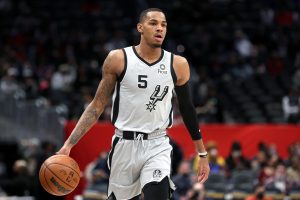
The second team that improved this offseason was the Atlanta Hawks. After making a surprise run to the Eastern Conference Finals in 2021, Atlanta got eliminated in five games by the Miami Heat in what was a major wake up call to the Hawks organization. Starting point guard Trae Young simply wasn’t able to single handedly carry the Hawks’ offense, so the front office decided to give him more help in the backcourt by trading for guard Dejounte Murray. Coming off his first all star appearance, Murray has officially made the jump from good young player to young star. He averaged over 20 points per game last season, but he also added 13 triple doubles, good for second in the league behind league MVP Nikola Jokic. So in his prime at the age of 25, the Hawks decided there was no better time to trade for him by giving up three first round picks, a pick swap and veteran forward Danilo Gallinari.
The major question surrounding this trade is the usage of both Young and Murray. Young had the fifth highest usage rate in the NBA last year, and was the clear number one option for the Hawks. Murray, while not having as high of a usage rate as Young, was still the number one option for a young Spurs team and constantly had the ball in his hands. Now, it remains to be seen how much each player will get the ball. Young will surely welcome the help of Murray and the load he’ll take off of him, but Young is also someone who needs the ball in his hands to be successful, so the Hawks need to make sure they manage the amount of time each player has the ball.
The third team that improved this offseason was the Portland Trail Blazers. Last season, the Blazers had their worst season in over 15 years. After losing Damian Lillard to an abdominal injury just 29 games into the season, the Portland Trail Blazers decided to clean house by trading veterans C.J. McCollumn, Robert Covington and Norman Powell. With an entirely new roster after the trade deadline, the Trail Blazers finished the season with their worst record since the 2005 season when they won only 21 games. After finishing with a record of 27-55, the Blazers won the number seven overall pick in the lottery and took Kentucky guard Shaedon Sharpe in the draft. But that wasn’t the Blazers only major move. They re-signed Damian Lillard to an astronomical two year deal worth $122 million dollars, signaling their belief in him to come back better than before for the start of the season. In addition, they traded for veteran forward Jerami Grant, a player who has averaged 20 points per game the past two seasons. And on top of all this, they extended Anfernee Simons, a young star who emerged last season by averaging 17 points per game.
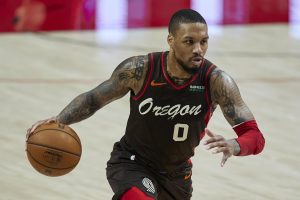
Despite these additions, there are a plethora of questions that remain unanswered. The first of these is how good Damian Lillard will be. Lillard is 32 and is coming off a major surgery that kept him out over half the season. He obviously still has some gas left in the tank, but the question is just how much of it does he have? As he gets up there in age, it’s hard to see him replicating a season similar to the one he had three years ago, where he averaged 30 points per game on a ridiculous 40% from deep. In addition to Lillard, the Blazers also have to deal with Jerami Grant. Yes, he’s averaged over 20 points per game over the past two seasons. But that’s been solely due to the fact that he’s been the far and away number one option on a young, inexperienced and rebuilding Detroit Piston’s squad. Now serving as the number two option behind Lillard, how will Grant adapt? Furthermore, the Blazers also have Anfernee Simons who, like Grant, is no longer the number one option. He put up 17 points per game last season, but the Blazers had literally no one else to handle the ball. Therefore, Simons was able to put up points by the dozen as he constantly had the ball in his hands. The Blazers additions this offseason were great, but it remains to be seen what they’ll look like on the court.
The fourth team that improved this offseason was the Cleveland Cavaliers. The Cavaliers have been in a painfully long rebuild since 2018, when LeBron James left his hometown team for the second time to join the Los Angeles Lakers in Hollywood. From 2018-2020, the Cavaliers never won more than 22 games and struggled to find their footing each year with a group composed of primarily young and inexperienced players. But 2021 was a turning point for the Cavs organization. They finished the year with 44 wins, doubling their previous high over the last three years. But more importantly, their young pieces finally started to mesh. Despite losing guard Collin Sexton to injury early on in the season, every other young player improved. Darius Garland made his first All-Star appearance while averaging 20 points per game. Evan Mobley averaged 15 points and eight rebounds per game and finished second in Rookie of the Year voting. Jarrett Allen averaged a double double with 16 points and 11 rebounds per game on the year. Caris LeVert, the Cavs big trade deadline piece, averaged 17 points as well. But the Cavaliers still weren’t content, leading them to trade for superstar guard Donavan Mitchell. Now, the Cavs have arguably the best young core in the league and are one of the top picks to win the Eastern Conference.

When it comes to questions surrounding the Cavs, the main one is how all their young players will mesh. The Cavaliers have so many good young players so it’s hard to really declare a number one option. Therefore, you’d have to figure that the Cavs would aim for an approach in which everybody is consistently getting touches. But how will that work with Donovan Mitchell, a career 24 point per game scorer who has never not had the ball in his hands? And what about Darius Garland, last year’s number one option on the Cavaliers? Add in Caris Levert, and the Cavs suddenly seem to have too many options. Now that last statement is a bit of a stretch as you can never have too many options in the NBA. But the Cavs just need to be careful that they are spreading the ball around and letting everyone on the team get the ball.
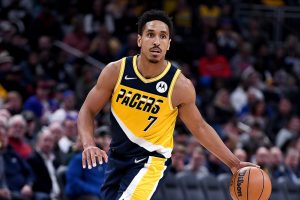
The fifth and final team that improved this offseason was the Boston Celtics. Reaching the NBA Finals last year, there didn’t seem to be many ways in which the Celtics could improve. But, unsurprisingly, they found a way to by trading for guard Malcolm Brogdon. Brogon, who has averaged 20 points per game the past two seasons with the Pacers, now shifts reigning DPOTY Marcus Smart back to the two guard spot while the superstar duo of Jaylen Brown and Jayson Tatum remain at the two forward spots. Center Robert Williams should fill out the starting five at the center position and, by the looks of it, the Celtics should once again be considered the favorites to win the East.
The big question surrounding the Celtics actually has nothing to do with their players but rather their head coach, Ime Udoka. Udoka was recently suspended by the NBA for the entirety of the upcoming season due to a violation of team policies. Now, assistant coach Joe Mazzula is set to take over for Udoka. But it won’t be easy, as expectations are sky high after the Celtics made the NBA Finals last year in Udoka’s first season as the head coach. However, the Celtics have arguably the most complete roster in the East and, as long as they can continue their strong play from last year, there’s no reason to believe that they can’t repeat as Eastern Conference Champions.
So will the Warriors repeat as champions? Or will someone else emerge victorious at the end of the season? Ultimately, these questions can be pondered and thought about by NBA fans everywhere, but we really won’t know the answers to them until the season begins.

